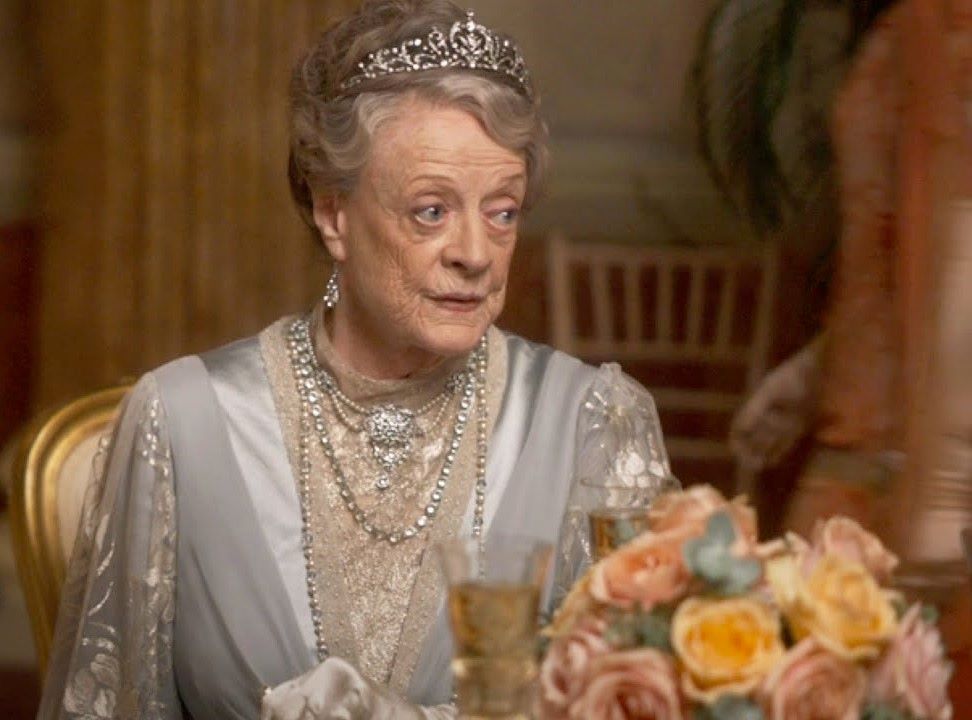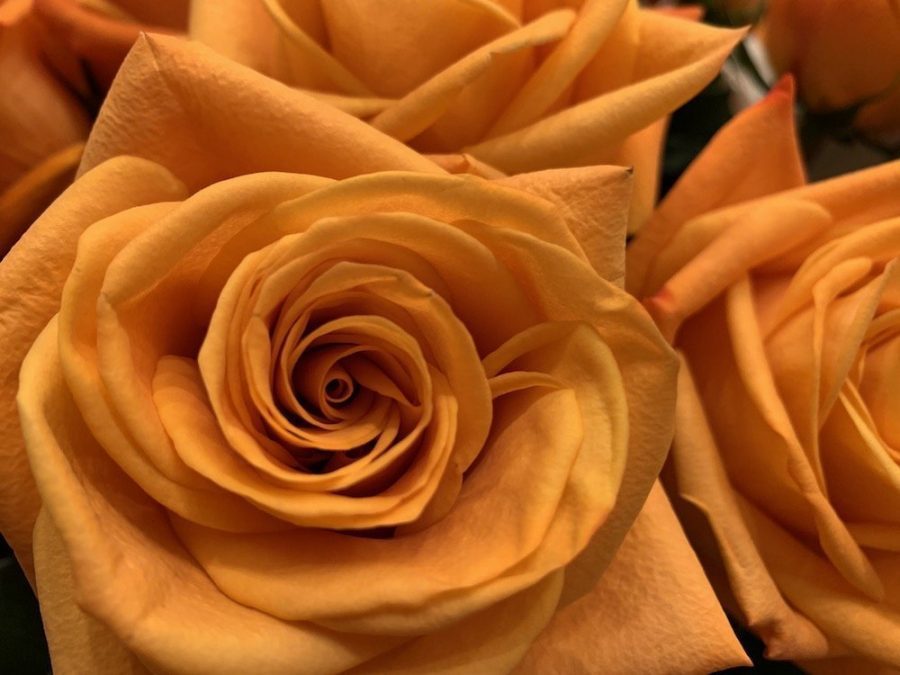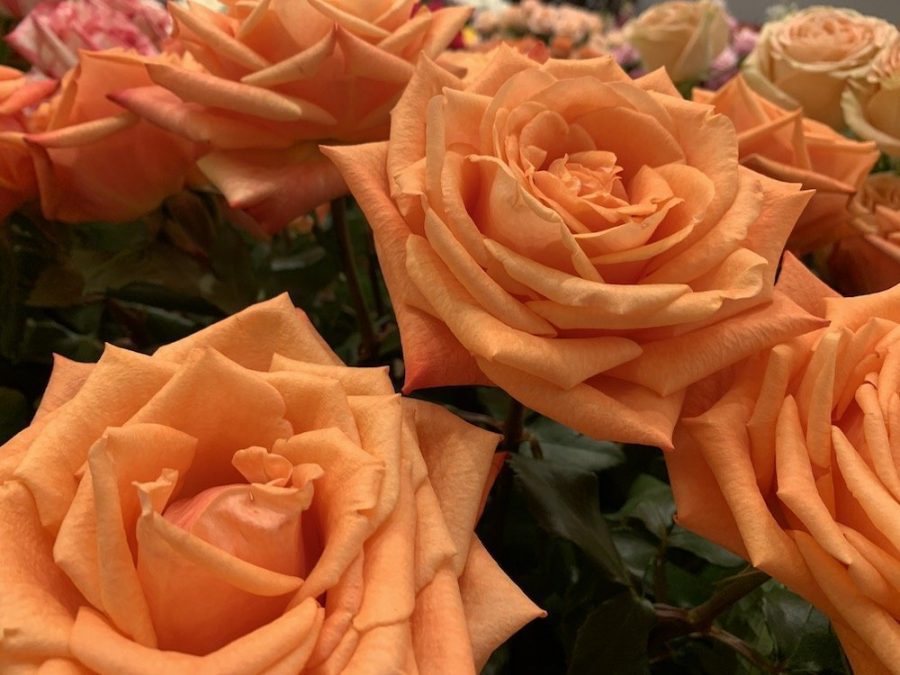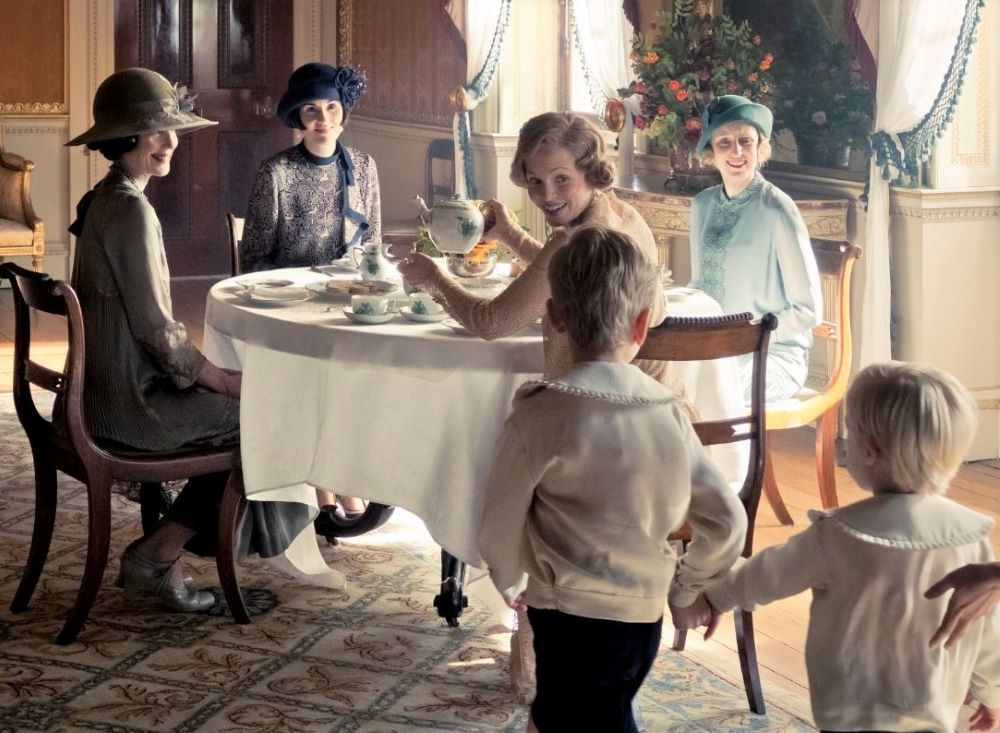Coral Flowers Featured in Downton Abbey Are A Modern Trend
By Jill Brooke
Considering that “Downton Abbey” writer Julian Fellowes named his most popular character, “Countess Violet Crawley” it shouldn’t come as a surprise that lush flowers are part of the background landscape in both the series and now blockbuster film.
 Photo Credit: Focus Features Films
Photo Credit: Focus Features Films
It may come as a surprise that the flowers used to depict early 20th-century life are trending as the most contemporary colors to use in modern-day floral arrangements.
Yes. Coral, salmon and soft tangerine flowers were as abundant on the set as the Countess’ quips.
“At my age, one must ration one’s excitement,” Maggie Smith’s character once dryly noted.
But we won’t ration our excitement, because flower lovers around the globe were delighted to see the floral arrangements created by florist Helen Byrne displayed so artfully.
“The flowers in ‘Downton Abbey’ are very symbolic of the romantic era of the twenties — a time thought to be more elegant and genteel than today,” says TV critic Diane Clehane. “It doesn’t surprise me that the same types of arrangements in pretty peaches and corals in the film have gained popularity today. It’s the same reason people adore the film. It’s a touch of civility during a very uncivilized time. Right now anything reminiscent of an idealized past is much preferred over totems of our uncertain future.”
In that era of refined opulence, colors were also weaved through the house like threads in the priceless Aubusson rugs. Wallpapers, fabrics and rugs had jewel tones that these flowers complemented.

These same coral tones are trending today, but for a different reason. As cultural pulse taker Dustin Garis points out, millennials are looking for experiences, not manor houses with staff to polish silver candelabras.
Award-winning floral designer Lisa Greene, creative director of Beach Plum Flower Shop, in Newburyport, Massachusetts, believes the coral popularity is a push-back in bouquets because brides veered toward white, blush and ivory roses for so many years.
“Everybody was doing it and it was done and done and done,” she says. Greene points out that coral is a versatile color that can “amp up the soft ivory shades for that bride “who still wants tradition and can also be an ideal color for the bride who wants “to be set free of convention” and go more for brighter colors. “Coral also can be matched with bright colored flowers in reds and yellows,” she adds. “Everyone seems to be wanting happier color palettes and are embracing more color.”
At the American Society of Florists convention for Outstanding Varieties Competition, many coral and salmon blooms were showcased including “Rose Nexus,” grown by Rosaprima, “Sunset Glory” by Rosen Tantau and “Free Spirit” by Esprit Miami.



“Living Coral,” was also named by the Pantone Color Institute as the 2019 Color of the Year. Ironically what was 2018 color? “Ultra Violet.”
The Countess would certainly approve.
“A global team of color experts comb the world looking for new color influences,” said Laurie Pressman, vice president of the Pantone Color Institute, explaining the coral choice. “This can include the entertainment industry and films in production, traveling art collections and new artists, fashion, all areas of design, popular travel destinations, as well as new lifestyles, play styles, and socio-economic conditions. Influences may also stem from new technologies, materials, textures, and effects that impact color, relevant social media platforms and even upcoming sporting events that capture worldwide attention.”
Clearly “Downton Abbey” will influence our culture for years to come. Especially since a sequel is now anticipated, after it’s a huge box-office success.
And why not? As film critic Roger Friedman of Showbiz411 notes, “Everything is always in bloom at ‘Downton Abbey.’ We never see anything cold, dark and grey. The flowers are blooming and lush and express very effectively an optimism we all want to see.”

Jill Brooke is a former CNN correspondent and editor-in-chief of Avenue and Travel Savvy magazine. She is an author and the editorial director of FPD.
Film Still Photo Credits: Focus Feature Films
